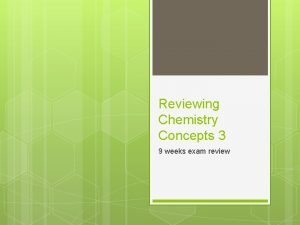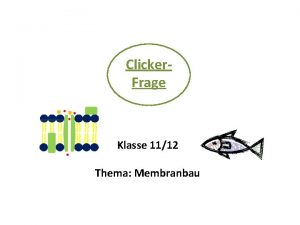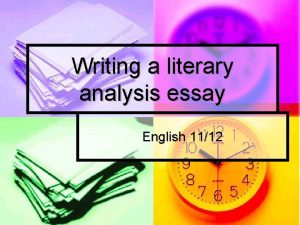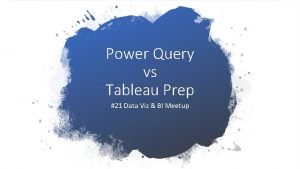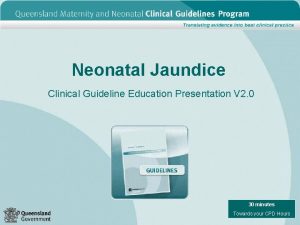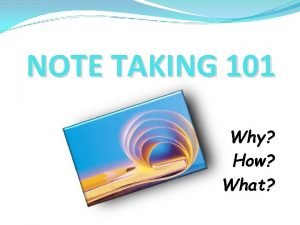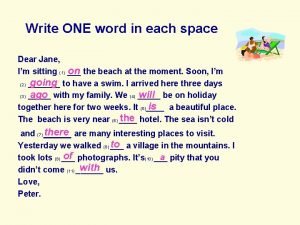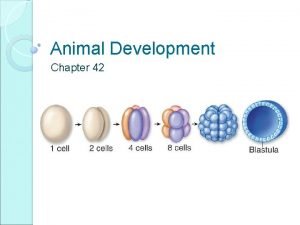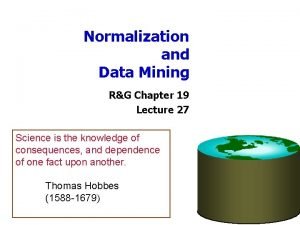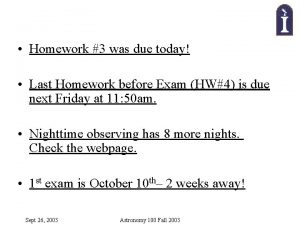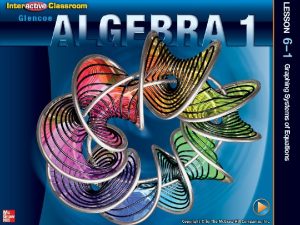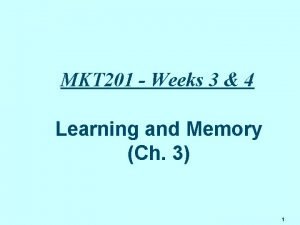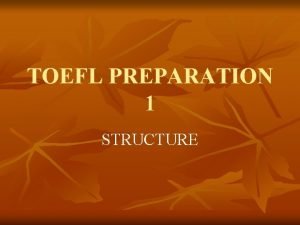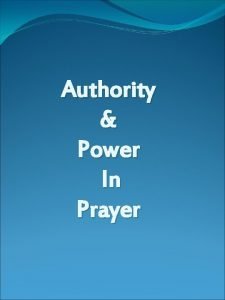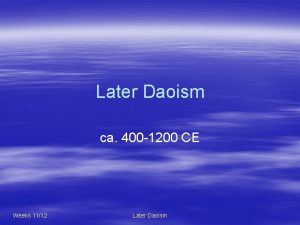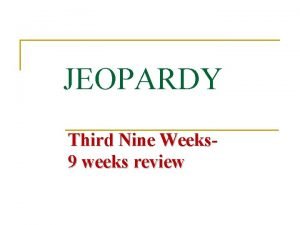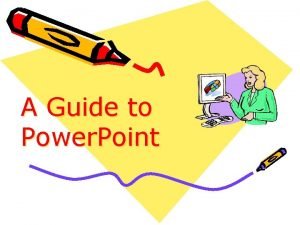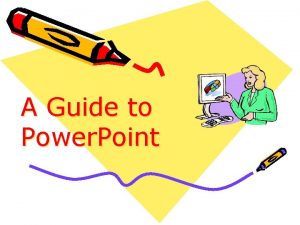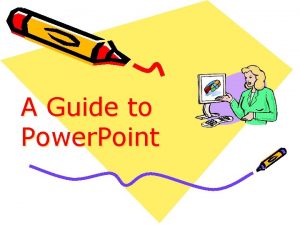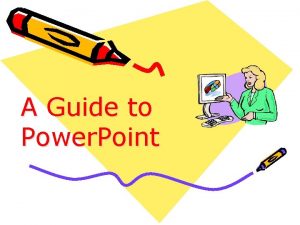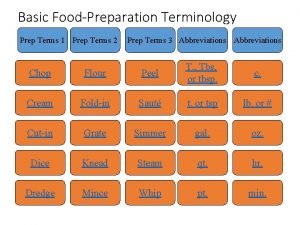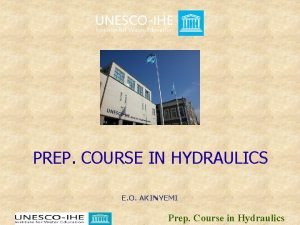Weeks 1112 and Review prep Power Point as












































- Slides: 44

Weeks 11+12 and Review prep. • • • Power. Point as for Review 2, with evidence to support success Upload observation evidence Discuss targets for September with mentor Upload KS 2 Experience forms Complete TTT Lesson Planning proforma for observation Complete SNT/TTT Survey and submit online by 05/07 10/07 Shaun Daly – ‘TTT experience’ review session 10/07 - OMAM - text and twang! Bring timetable and topics for September on 17/07 Agree date/s for August meeting/s

Tips and Trips

Do Now • On a scale of 1 -10, 10 being very confident, how do you feel about teaching Shakespeare in September? • Give reasons for your score • What, if anything, would be helpful?

Teaching Shakespeare Week 10 03. 07. 19 @Teach. First @teachfirstuk

Session overview: PDF links PDF theme Standards • Theme 1: Subject Knowledge • 1. 3 Uses knowledge of subject to and Pedagogy support practice • Theme 3: Instruction 3. 1 Present ideas, knowledge and concepts clearly 3. 2 Uses strategies to ensure a high participation ratio

Session Outcomes By the end of this session you will: • Have considered different approaches to teaching Shakespeare • Have taken an active role in a Shakespeare scene • Have identified areas of confidence and areas for development • Have planned next steps to be ready for September

Big question: Can we teach pupils to love Shakespeare?

How were you taught Shakespeare? How do you want to teach Shakespeare?

What you need to know: • The context • The plot • The themes • The characters • Key scenes • Key quotes • Where to find resources

What you don’t need: • To understand every word • To read the whole play in class

Key scenes: Macbeth • • • The witches prophesy that Macbeth will be king (1. 3) Lady Macbeth reads the letter and makes a plan (1. 5) Macbeth murders Duncan (2. 2) Macbeth arranges Banquo’s murder (3. 1) Banquo’s ghost appears at the banquet (3. 4) Macbeth hears the witches' new prophecies (4. 1) Macduff's family is murdered (4. 2) Malcolm and Macduff join forces (4. 3) Lady Macbeth’s decline (5. 1) Macduff kills Macbeth (5. 7) Romeo and Juliet • • • The scene is set (1. 1) The lovers meet for the first time (1. 4) Romeo risks death to meet Juliet again (2. 1) The wedding is held in secret (2. 5) Romeo kills Juliet's cousin, Tybalt (3. 1) Juliet defies her father (3. 5) The Friar suggests a dangerous solution (4. 1) Juliet is found 'dead' (4. 4) Romeo learns of the tragedy and plans suicide (5. 1) The tragic conclusion (5. 3)

Getting started at KS 3: Active Static • rsc. org. uk Teachers’ Packs • Whoosh! • Tableaux • Director’s chair • Ppt – e. g. TES ‘Macbeth’jamestickle 86 • Ppt e. g. TES ‘R+J’ ifernback • Youtube clips • KS 3 Bitesize

Improvising in pairs • Two best friends sharing a secret • Two best friends who don't trust each other • Two sides of a character • An old king handing his crown to his eldest son • A childless couple

LO: To present a proposal for a film based on _______ • Know your objectives – long and short term • Plan a modern day equivalent task based on the key theme e. g. greed and ambition, family feuds, lovehate relationships, forbidden love • Pupils to work in groups to create a proposal for a film based on ______ and present ideas to the class; limit to 5 main characters and events

1. Do Now: write 5 words or phrases linked to: 2. Share with partner 3. Share with group – agree definition greed 4. Add ‘power’ to ‘greed’ – what images come to mind? 3 mins to think, then share 3 mins 7 mins 5. Share LO: To create a proposal for a film based on power and greed in at least one character. • Discuss patterns in good v. evil scenarios, characteristics of heroes and villains etc • Limit characters and events to 5 • Set the scene, add a title • Outline characters and personalities • Summarise a situation, crisis and resolution 5 mins 6. Pupils work in groups to create a proposal for their film (15 mins) 7. Groups present proposal: max. 2 mins (15 mins) 8. Groups take turns to be the panel who comment first on the proposal, based on the brief (5) 9. Class complete post-it note for favourite film with reason/s and stick on board on exit.

Title: Summarise the situation, crisis and resolution: Setting: Characters – name, age: 1. 2. 3. 4. 5. Role / relationship 1. 2. 3. 4. 5. Personality 1. 2. 3. 4. 5. Events: 1. 2. 3. 4. 5. Who is involved? What do they do?

LO: To know the story of ‘Macbeth’; to identify key themes (static) • Tell an anonymised version of the plot and link to film ideas from previous lesson (see example in Notes) KS 3 Bitesize: • Macbeth is a hero in Scotland’s battle with Norway • Three Witches predict great things for Macbeth • Lady Macbeth persuades Macbeth to kill King Duncan to get the throne • Macbeth kills King Duncan and becomes King • Macbeth has his best friend, Banquo, murdered • Macbeth sees the witches again • Lady Macbeth is full of remorse and dies • There is a battle and Macduff decapitates Macbeth • Pupils create storyboard or retell the story in less than 50 words. • SPLAT to check understanding

Macbeth Duncan Banquo Witches Fleance Dagger Scotland Lady Macbeth King Macduff

LO: To know the story of ‘Macbeth’; to identify key themes (active) Whoosh! RSC Teachers’ Pack

Whoosh!

LO: To know the story of ‘Macbeth’; to identify key themes (active) Whoosh! the story using RSC Teachers’ Pack: • Give out printed synopsis of numbered scenes to groups of 4/5 pupils • Pupils create a tableau for each scene (model) • Pupils show scenes in order; read out synopsis then show tableau and speak the lines • Show written copy of 20 scenes - pupils stick in books

Theme tracker Natural order Supernatural Children Blood Ambition Who? How? Quote ref.

LO: To know the characters in ‘Macbeth’ Active • RSC Character notes • Groups of 3: 1 director; create freeze frame/s of character at start of play – how much can they show about the character? • Show freeze frames • Macbeth goes to the centre – directors position characters according to importance / influence in relation to Macbeth – discuss human diagram • Pupils reconstruct an annotated diagram in their books Static • RSC character notes • Pupils draw and label diagrams – or create simple puppets - of characters in relation to their importance and influence over Macbeth at the start of the play • Find key quotes in Act 1 scene 2 to show first impressions of Macbeth • Write a paragraph explaining why Duncan decides to make him Thane of Cawdor.

Suspend your disbelief!

Character tracker Powerful Loyal Brave Cruel Innocent Who? How? Quote ref.

1. 2. LO: To explore the supernatural context of Macbeth (static) 3. 4. 5. 6. 7. 8. Do Now – astrology symbols Discuss images of astrology and ask for experience / views Explain the context of the play – James 1 – witches were a ‘real’ threat – punishable by death! Remind pupils that Shakespeare wrote his plays to be watched not read Show 2 different versions of witches in Macbeth – discuss interpretations and impact Pupils complete grid and add own interpretation of witches Share interpretations Summarise on post-it note and add to trad. or modern board

Do Now: 1. What do you think this image represents? 2. If you know, can you name the symbols? 3. If you don’t know, are there any clues to help you? Hint: Count the symbols!

Superstition context “In superstition, wise men follow fools… without a veil, it is a deformed thing, that destroys and corrupts” What does Bacon mean by this? How can we link it to the witches in Macbeth? Francis Bacon was a famous Renaissance philosopher. His writing gives us Historical Context: it offers a window into thinking in the seventeenth century.

Casting the witches: How they look 1 2 Your idea What they How they wear sound Where they are Their impact

Polanski: 1971

RSC 2018:

1. 2. LO: To explore the supernatural context of Macbeth (active) 3. 4. 5. 6. Do Now – read info on context witches – discuss. Remind pupils that Shakespeare wrote his plays to be watched not read – they are going to be actors and directors Show 2 different versions of witches in Macbeth – discuss interpretations briefly as prompt for task Organise pupils into groups of 4 or 5. Give out scripts of the scene – 3 witches + 1 director (+co-director) Groups decide on interpretation of scene, practise and perform Pupils write a guided evaluation of their performance.

RSC 2018 Banquo’s ghost

Patrick Stewart Banquo’s ghost

Casting Banquo’s ghost: How he looks 1 2 Your idea What he wears What he does Where he is His impact

LO: To show Macbeth changes from ‘brave’ to ‘butcher’ • Do Now – development of vocabulary for writing assessment

Do Now: Create word families Synonyms Influential Courageous Forceful Ruthless Determined Antonyms Cowardly Content Powerless Weak Humane Bravely Bravery Synonym Courageous Antonym Cowardly Ambitious Cruel Powerful Persuasive

Valiant cousin Worthy gentleman Brave Macbeth Worthy thane Butcher Hell-hound Devil Fiend Monster Bloody Macbeth Devilish Macbeth Hero to villain: what kind of king would Macbeth be?

LO: To show Macbeth changes from ‘brave’ to ‘butcher’ How could you use the quotes to plan a lesson explore changes in Macbeth? e. g. Develop scenarios to show his response before and after he kills Duncan

Is this a dagger which I see before me, The handle toward my hand? Come, let me clutch thee. I have thee not, and yet I see thee still. Art thou not, fatal vision, sensible To feeling as to sight? or art thou but A dagger of the mind, a false creation, Proceeding from the heat-oppressed brain? I see thee yet, in form as palpable As this which now I draw. Thou marshall'st me the way that I was going; And such an instrument I was to use. How would you prepare this soliloquy for analysis?

Is this a dagger which I see before me, The handle toward my hand? Come, let me clutch thee. I have thee not, and yet I see thee still. Art thou not, fatal vision, sensible To feeling as to sight? or art thou but A dagger of the mind, a false creation, Proceeding from the heat-oppressed brain? I see thee yet, in form as palpable As this which now I draw. Thou marshall'st me the way that I was going; And such an instrument I was to use. How would you prepare this soliloquy for analysis?

Session Outcomes By the end of this session you will: • Have considered different approaches to teaching Shakespeare • Have taken an active role in a Shakespeare lesson • Have identified areas of confidence and areas for development • Have planned next steps to be ready for September

Next steps: 1. Go to rsc. org. uk and find relevant Teachers’ Packs for September 2. Explore Shakespeare on KS 3 Bitesize 3. 4.

? Questions? @Teach. First @teachfirstuk
 3rd 9 weeks exam review chemistry
3rd 9 weeks exam review chemistry Scxi-1112
Scxi-1112 Rfc 1112
Rfc 1112 Frage 1112
Frage 1112 Eng 1112
Eng 1112 Marcos 1112
Marcos 1112 English 1112
English 1112 Draw the power triangle
Draw the power triangle Tableau prep vs power query
Tableau prep vs power query Power bi power point
Power bi power point Point point power
Point point power Mystery rhyming words
Mystery rhyming words Total annual cost of inventory formula
Total annual cost of inventory formula Weeks of supply formula
Weeks of supply formula 3 weeks pregnant ultrasound
3 weeks pregnant ultrasound Dr veronica white
Dr veronica white Pharyngeal arches
Pharyngeal arches 4 weeks before christmas
4 weeks before christmas Liquor in pregnancy
Liquor in pregnancy Bilirubin chart
Bilirubin chart Gestational age in weeks
Gestational age in weeks This weeks lesson
This weeks lesson Note taking 101-part 2
Note taking 101-part 2 Bma rota 6 weeks notice
Bma rota 6 weeks notice Write one word for each space dear jessica
Write one word for each space dear jessica Flocabul
Flocabul Chittibabu and chinnababu live in atreyapuram town in
Chittibabu and chinnababu live in atreyapuram town in 8 weeks embryo
8 weeks embryo Two week notice letter example
Two week notice letter example 15 week fetus pictures
15 week fetus pictures 3 weeks from today
3 weeks from today Shannon weeks
Shannon weeks Hagen poiseuille law
Hagen poiseuille law Homework due today
Homework due today How many weeks
How many weeks 201 weeks
201 weeks 6 weeks of lent
6 weeks of lent 4 weeks before christmas
4 weeks before christmas Disadvantages of hub and spoke model
Disadvantages of hub and spoke model Solar power satellites and microwave power transmission
Solar power satellites and microwave power transmission Actual power and potential power
Actual power and potential power Dispersive power of grating can be defined as
Dispersive power of grating can be defined as Jacob's ladder wound closure
Jacob's ladder wound closure Skill 18 base form verbs after modals
Skill 18 base form verbs after modals Exousia power
Exousia power
